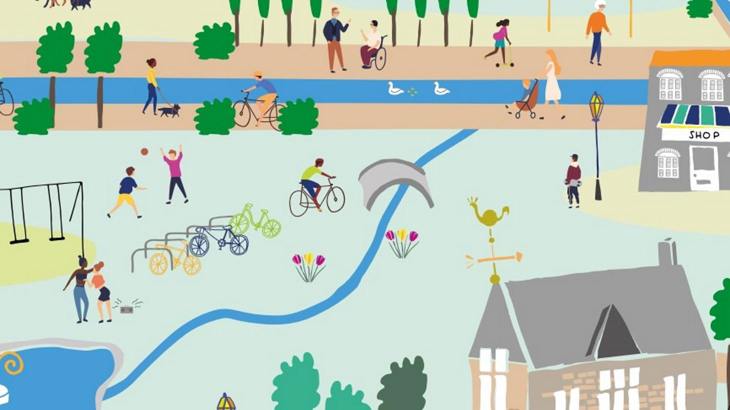For the last 50 years, the places where we live have been planned around the needs of the motorcar. This has had a damaging effect on our bodies, our minds, and even the air that we breathe – to the extent that transport – and largely cars – are now reported to be the UK’s largest source of greenhouse gas emissions. Better planning of new housing developments is critical to tackling poor air quality, physical inactivity and local congestion.

Currently, too many neighbourhoods are planned around car travel at the expense of providing the local jobs and services that a community needs to thrive.
The latest Transport for Better Homes research found that 18 out of 20 recently built housing developments were designed around the car. This means people live in unhealthy, miserable places and are forced into a car-dependent lifestyle.
People in these types of developments have little choice but to drive to do something as simple as buy a pint of milk, and disadvantage anyone without a vehicle – they are left with poor access to the things we all need every day and at risk of isolation. And so, unsurprisingly, people living in more deprived communities, where people are less likely to drive are at most risk of road danger, air pollution and struggle to access what they need to live a decent life.
But it doesn’t have to be like this
We desperately need new, and affordable housing. So now is the time to stop building out of town car-dependent housing estates devoid of any services, and start building strong, well-connected neighbourhoods.

Sustrans in our manifesto for UK Government set out how we can change this.
Sustrans has a vision where all people living in towns and cities live in a place where everything they need is within a 20-minute walk. Schools, shops, recreation and work is on their doorstep.
Streets prioritise people with wide pavements, seating and cycle parking. Green space is ubiquitous in neighbourhoods. Cars are guests on residential streets and are the exception around schools. Children play out as it feels safer, and they walk and cycle to school again.
People choose to walk and cycle because it is the most obvious choice, the easiest choice, the cheapest choice. Public transport is easily accessible, cheap and frequent.
People see their neighbours and have a social connection to the place in which they live. It is a community.
In order to make this a reality Sustrans is calling on the next UK Government to make the 20-minute neighbourhood concept a central principle of the planning system.
By building communities where housing, jobs and retail sit side by side, we can unlock productivity and connect people with places and with each other.
Reducing the need for people to travel in a private vehicle will go a long way to reducing the emissions which the UK are producing, whilst also making the country’s air cleaner, people healthier and supporting cohesive communities.






